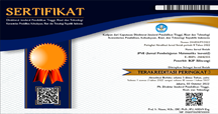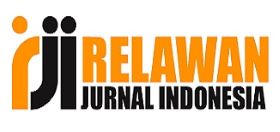MODEL PEMBELAJARAN BLENDED LEARNING: KAJIAN META-ANALISIS
DOI:
https://doi.org/10.22460/jpmi.v4i6.p%25pKeywords:
Blended Learning, Mathematics LearningAbstract
References
Amin, A. K. (2017). Kajian Konseptual Model Pembelajaran Blended Learning berbasis Web untuk Meningkatkan Hasil Belajar dan Motivasi Belajar. Jurnal Pendidikan Edutama, 4(2), 51–64.
Anwar, R. (2005). Meta Analisis. Bandung : Bagian Obstetri dan Ginekologi Fakultas Kedokteran UNPAD.
Atika, A., Machmud, A., & Indonesia, U. P. (2020). Jurnal basicedu. 4(4), 919–928.
Fahrurrozi, M., & Majid, M. A. (2017). Pengembanggan Model Pembelajaran Blended Learning Berbasis Edmodo dalam Membentuk Kemandirian Belajar Siswa Pada Mata Pelajaran Ekonomi Kelas Xi Ips Sman 1 Selong Tahun Pelajaran 2017/2018. JPEK (Jurnal Pendidikan Ekonomi Dan Kewirausahaan), 1(1), 57. https://doi.org/10.29408/jpek.v1i1.459
Gazali, R. K. (2017). Effect Size Pada Pengujian Hipotesis. In Journal of Chemical Information and Modeling. Sanata Dharma University.
Idris, H. (2018). Pembelajaran Model Blended Learning. Jurnal Ilmiah Iqra’, 5(1), 61–73. https://doi.org/10.30984/jii.v5i1.562
Sirojuddin, A. (2020). Pengaruh Pembelajaran Blended Learning Menggunakan Aplikasi Google Classroom Di Masa Pandemi Covid 19 Terhadap Kemampuan Komunikasi Matematis Siswa Sekolah Menengah Pertama Negeri 7 Muaro Jambi
Masyhur, F. (2017). Penelitian e-Government di Indonesia: Studi Literatur Sistematis dari Perspektif Dimensi Pemeringkatan e-Government Indonesia (PeGI). JURNAL IPTEKKOM : Jurnal Ilmu Pengetahuan & Teknologi Informasi, 19(1), 51. https://doi.org/10.33164/iptekkom.19.1.2017.51-62
Nugraha, H. D., Poniman, D., Kencanasari, R. A. V., Maosul, A., & Rusydi, M. I. (2020). Meta-Analisis Model Pembelajaran Vokasi dalam Kondisi Covid-19. Jurnal Dinamika Vokasional Teknik Mesin, 5(2), 83–94. https://doi.org/10.21831/dinamika.v5i2.34779
Nurhasanah, Sutrisno, L., & Tiur M.S, H. (2015). Pengaruh Problem Based Learning pada Hasil Belajar Fisika: Sebuah META-ANALISIS Artikel Jurnal Online Indonesia. 151, 10–17. https://doi.org/10.1145/3132847.3132886
Offline, E., & Learning, M. (2003). Blended. Economist, 366(8308), 61.
Retnawati, H., Apino, E., Kartianom, Djidu, H., & Anazifa, R. D. (2018). Pengantar Analisis Meta (Issue August 2019).
Sobron, A. N., Titik, S., & Meidawati, S. (2020). Jurnal Inovasi Penelitian. Jurnal Inovasi Penelitian, 1(3), 1–4.
Ulfi, M. S., Holisin, I., & Suprapti, E. (2020). Meningkatkan Hasil Belajar Matematika Melalui Model Pembelajaran Blended Learning Berbasis Schoology Di Sma Muhammadiyah 2 Surabaya. Proceeding …, November, 123–130. http://journal.um-surabaya.ac.id/index.php/Pro/article/view/4350.

















